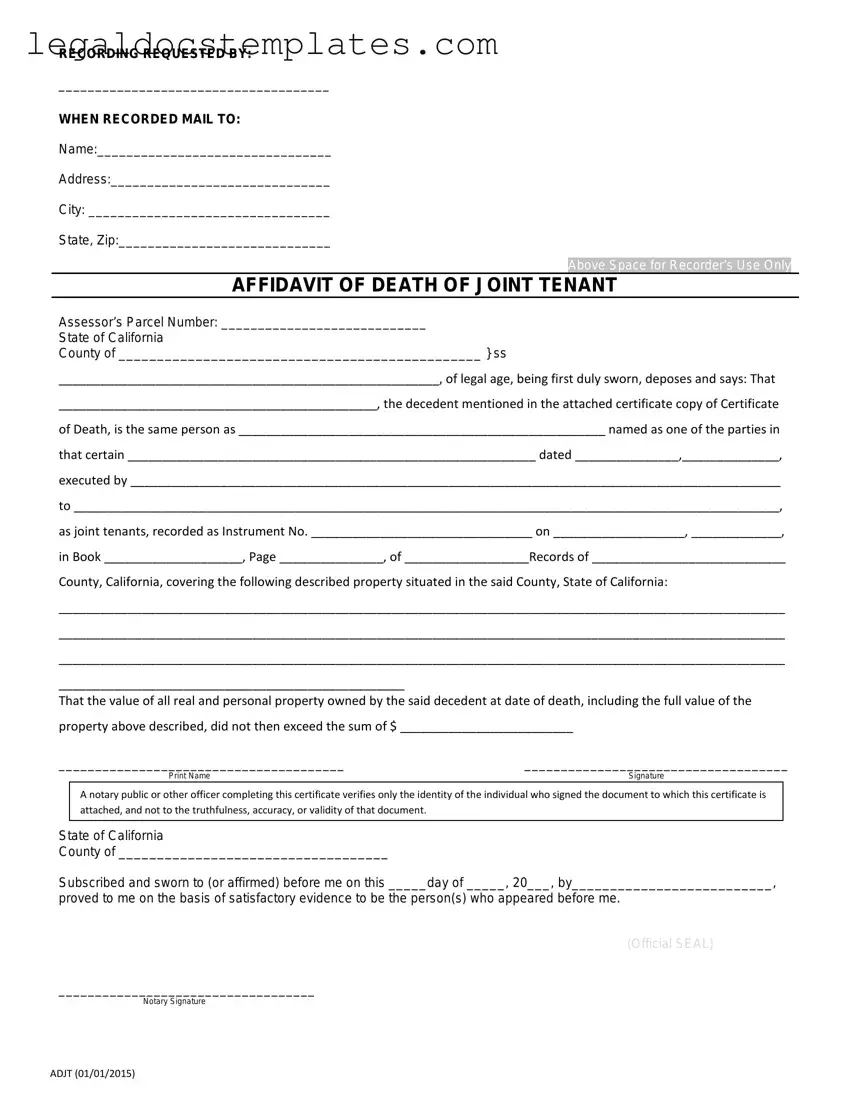RECORDING REQUESTED BY:
_____________________________________
WHEN RECORDED MAIL TO:
Name:________________________________
Address:______________________________
City: _________________________________
State, Zip:_____________________________
Above Space for Recorder’s Use Only
AFFIDAVIT OF DEATH OF JOINT TENANT
Assessor’s Parcel Number: ____________________________
State of California
County of _______________________________________________ } ss
_______________________________________________________, of legal age, being first duly sworn, deposes and says: That
______________________________________________, the decedent mentioned in the attached certificate copy of Certificate
of Death, is the same person as _____________________________________________________ named as one of the parties in
that certain ___________________________________________________________ dated _______________,______________,
executed by ______________________________________________________________________________________________
to ______________________________________________________________________________________________________,
as joint tenants, recorded as Instrument No. ________________________________ on ___________________, _____________,
in Book ____________________, Page _______________, of __________________Records of ____________________________
County, California, covering the following described property situated in the said County, State of California:
_________________________________________________________________________________________________________
_________________________________________________________________________________________________________
_________________________________________________________________________________________________________
__________________________________________________
That the value of all real and personal property owned by the said decedent at date of death, including the full value of the property above described, did not then exceed the sum of $ _________________________
_______________________________________ |
____________________________________ |
Print Name |
Signature |
A notary public or other officer completing this certificate verifies only the identity of the individual who signed the document to which this certificate is attached, and not to the truthfulness, accuracy, or validity of that document.
State of California
County of ___________________________________
Subscribed and sworn to (or affirmed) before me on this _____day of _____, 20___, by__________________________,
proved to me on the basis of satisfactory evidence to be the person(s) who appeared before me.
(Official SEAL)
___________________________________
Notary Signature

